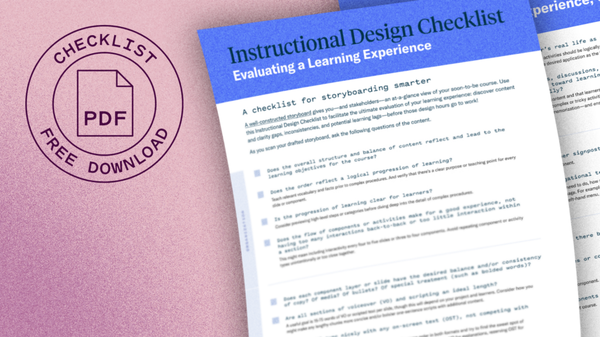
Instructional Design Checklist: Evaluating a Learning Experience | Maestro
A well-constructed storyboard provides the at-a-glance view you need to evaluate your soon-to-be learning experience. Our Instructional Design Checklist pairs perfectly with our storyboard template for the ultimate evaluation of your learning experience.
Use this Instructional Design Checklist to discover content and clarity gaps, inconsistencies, and potential learning lags—before those design hours go to work!
A well-constructed storyboard provides the at-a-glance view you need to evaluate yo...
Use this Instructional Design Checklist to discover content and clarity gaps, inconsistencies, and potential learning lags—before those design hours go to work!
A well-constructed storyboard provides the at-a-glance view you need to evaluate yo...





